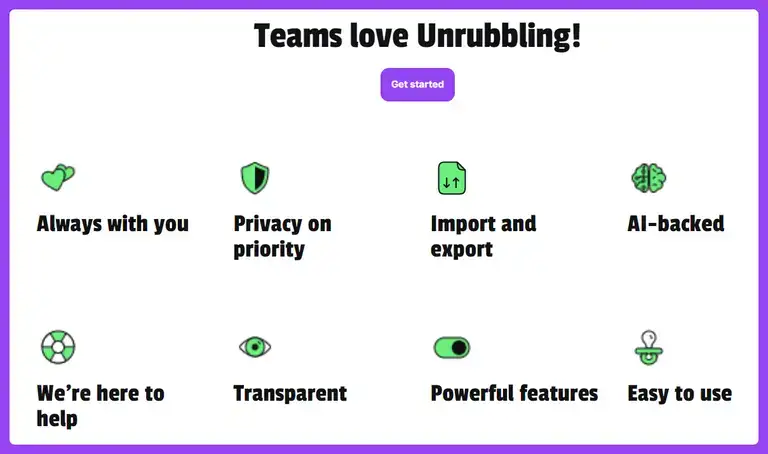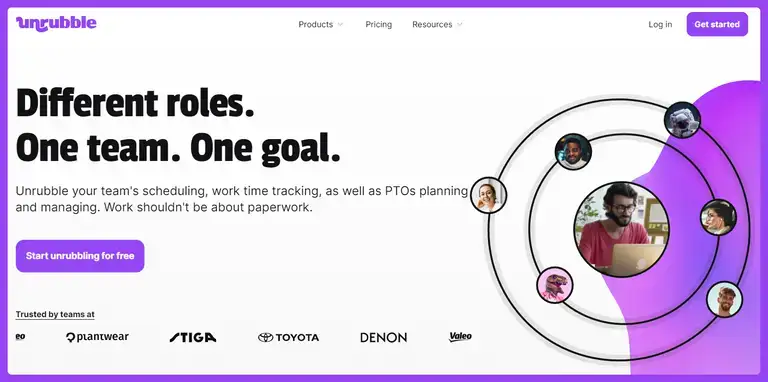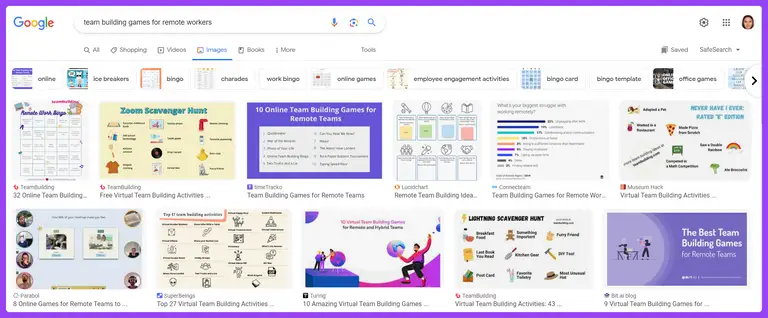Imagine running a company where your team isn't in one office but scattered across different places.
Managing them is like a whole new game.
If you're a manager, business owner, or the brain behind a company working remotely, you know it's not the same as having everyone in the same place.
We're here to share practical tips and smart ideas to make managing your remote team a piece of cake.
Whether you're a seasoned manager or just starting, we've got your back.
Let's make remote teamwork not just work but work amazingly well.
What is a virtual team?
A virtual team is a group of individuals who collaborate and work together towards common goals despite being geographically dispersed.
Unlike traditional teams that operate in a physical office, virtual teams rely on digital communication tools and technology to connect team members who may be located in different cities, countries, or even continents.
Key characteristics of virtual teams include their reliance on digital platforms for communication, project management, and collaboration.
Virtual teams leverage a variety of tools such as video conferencing, instant messaging, project management software, and file-sharing platforms to facilitate seamless communication and coordination.
One of the defining aspects of virtual teams is their ability to transcend physical boundaries.
Team members can work from diverse locations, often in different time zones.
This allows organizations to tap into a global talent pool. This flexibility in location promotes diversity and brings together individuals with unique perspectives and skills, contributing to a dynamic and innovative team environment.

Top reasons to improve virtual team management
In today's world, where teams often work from different corners of the globe, effective virtual team management has become more crucial than ever.
Here are the reasons why enhancing how your virtual team operates is a game-changer:
Improved collaboration
Working in a virtual team doesn't mean isolation. When team members collaborate effectively, it's like creating a masterpiece together. Despite being miles apart, using technology to foster face-to-face interactions, like video calls with a suitable conference camera, can break down barriers. Regular virtual meetings make it feel like you're in the same room, boosting teamwork and creativity.
Better communication
Communication is the heartbeat of any successful team, especially when team members work remotely. Efficient virtual teamwork relies on the ability to share information seamlessly.
Thanks to using various communication tools and strategies, such as clear written messages, virtual team meetings, and consistent updates, you bridge the gap created by physical distance.
Stronger company culture
A strong company culture is the glue that binds a team together. Even when working from home or in different time zones, reinforcing the company's values and goals through virtual means is essential. Regular team meetings, whether in-person or virtual, help nurture a sense of belonging and shared purpose. These are crucial elements in building a robust company culture.
Increased productivity
Productivity isn't about being physically present - it's about getting the job done efficiently. Virtual work allows flexibility, and effective virtual team management ensures this flexibility doesn't compromise productivity. When trust is established through consistent communication, shared information, and collaborative efforts, productivity soars. And that's even in the midst of times like the pandemic, working from home or in companies with international teams.
Best practices to manage a virtual team

In the dynamic landscape of virtual team management, implementing effective practices is essential for success.
So here are key strategies to enhance collaboration, productivity, and overall team satisfaction:
Establish guidelines for communication
Clear communication is the cornerstone of a well-functioning virtual team. Define how the team connects, whether through messaging apps, video calls, or emails.
Set expectations for response times, ensuring everyone understands the urgency associated with various communication channels. Creating a communication protocol fosters transparency and cohesion.
Practical tips:
- Pick good apps - choose easy tools like WhatsApp for quick messages, Zoom for talking face-to-face, marketing resource management solutions, and emails for formal stuff. Make rules so everyone knows when to reply and how fast.
- Talk about time - say when it's urgent or not in messages. Update the rules when things change or if they don't work.
- Check and change rules - look at how well these rules work. Change them if they don't.
Establish clear expectations
Setting expectations is vital for task clarity and project success. Clearly define deadlines and articulate the desired outcomes for each task. This clarity minimizes confusion, aligns team members, and keeps everyone on the same page regarding project goals and timelines.
Practical tips:
- Set SMART goals - make goals that are clear, can be measured, are doable, make sense, and have a time limit. Break big jobs into small parts.
- Use special tools - use solutions like Asana or Trello to show jobs and when they're due. Talk at the start about what's expected and ask questions if needed.
- Start meetings well - talk at the start of projects to clear up questions and make sure everyone knows what to do. Encourage everyone to talk about their ideas and problems.
Use time tracking
Implementing time tracking tools serves multiple purposes. It enables accurate measurement of task durations, aids in precise billing for client work, facilitates the creation of timesheets for payroll, and provides valuable insights into team efficiency.
Consider using tools like Unrubble to streamline and enhance your time tracking process.
Practical tips:
- Use easy tools - use tools like Unrubble to see how long jobs take. Talk often about what's happening.
- Look at time together - talk once a week or two about how time is used. Fix problems as soon as they appear.
- Use tools with jobs - connect time tools with project management software like Asana. Show how time connects to jobs.

Unrubble offers a sophisticated solution for time tracking and team coordination. It's ideal for managers seeking efficiency in managing dispersed teams working in different locations and time zones.
Our tool facilitates a sense of unity within the team, even in virtual work environments. We provide an organized platform that fosters trust and collaboration.
With Unrubble, team leaders can seamlessly manage their teams, making the coordination of tasks and schedules feel cohesive.
This not only simplifies the process of managing people but also aligns with effective leadership training practices.
Consider integrating Unrubble into your workflow to experience enhanced team connectivity and streamlined management.
How we help managers and business owners like you:
- time tracking - effortlessly monitor work hours for precision, build trust in your team's efforts
- employee scheduling - streamline team work with easy scheduling, making virtual collaboration feel seamless
- PTO tracking & managing - engage with hassle-free tracking and handling of time-off requests, make every team member feel like a crucial part of the team
- timesheets for easy payroll - simplify payroll processes with user-friendly timesheets
- a mobile time clock - clock in and out with flexibility and accuracy
- an employee self-service app - provide easy access to information with our employee app to make every team member feel connected and valued.
Make your life as a virtual team manager easier with Unrubble today.

Check out other useful software solutions for managing a remote business here.
Set core working hours
For global remote teams, defining core working hours is vital. Identify a specific time frame when all team members, regardless of their time zones, are expected to be online. This fosters better collaboration, coordination, and availability for real-time communication.
Practical tips:
- Use world clocks - use world clock tools to show when everyone is working. Pick certain hours when all team members must be online.
- Pick flexible hours - let people choose hours that work for them. Say when everyone must be online for some time.
- Talk about times - talk about when you work and when you don't. Make sure everyone knows.
Use project management tools to stay on track
Project management tools are indispensable for maintaining organizational clarity. Platforms like Asana help assign tasks, track progress, and manage deadlines efficiently. Choose tools that suit your team's needs to enhance collaboration and keep everyone on track.
Practical tips:
- Say what to do - utilize tools like Asana to show who does what and when. Talk about what's happening often.
- Use easy tools - make use of tools that everyone likes and understands. Connect tools with talking apps.
- Teach everyone - show how to use solutions in a meeting. Talk about problems and tricks.

Host team building activities
Foster a sense of camaraderie among virtual team members by organizing regular team building activities. Virtual coffee breaks, online games, or collaborative projects can help build connections, strengthen teamwork, and boost morale.
Practical tips:
- Chat and play - take breaks to talk or play games online. Make work feel friendly.
- Online games - play fun games together online. Have a good time and laugh to boost teamwork.
- Do projects together - work together on small jobs. Share ideas and make friends.

Create regular 1-on-1 meetings with managers
Individual check-ins provide employees with a platform to discuss challenges, share ideas, and receive personalized feedback. Regular one-on-one (if possible, face-to-face are the best) meetings with managers contribute to a supportive work environment. As such, they encourage open communication and allow to address concerns promptly.
Practical tips:
- Meet often - talk alone with your employees every few weeks. Tell about problems and ideas. Organize the meetings on Microsoft Teams or in person, for example.
- Use video calls - use video calls to see each other. Talk about work and other things.
- Have a list - make a list of things to talk about before the meeting. Express how you feel and what you want.
Recognize achievements
Acknowledging and rewarding team members for outstanding performance is essential for morale and motivation. Highlighting successes within the team boosts a positive atmosphere and reinforces a culture of appreciation.
Practical tips:
- Say "good job" - use apps like Slack or WhatsApp to say "good job" in public. Tell others when they do well.
- Give presents - get small gifts or extra time off for good work. Make people happy.
- Talk in reviews - in annual reviews, say what's good. Talk about how everyone helps.

Introduce a shared calendar
Implementing a shared calendar promotes transparency regarding team members' availability. This helps streamline scheduling, coordinate meetings effectively, and ensures everyone is aware of each other's work hours. The result? Better collaboration in the blink of an eye.
Practical tips:
- Connect calendars - use tools that connect calendars to talk apps. See when everyone is free.
- Use colors - make colors for different things. Know when people are busy or free.
- Plan a lot - plan things better with everyone's time in mind.
Manage virtual teams like a pro
As you can see, there are plenty of ways you can go down to improve your company.
Effectively managing virtual teams is a challenging task, but with the best pieces of advice like ours, you'll do amazing.
We are confident that these powerful tips for managing a virtual team will help you nail your efforts!
Once again, we'd like to highlight the importance of time tracking in terms of monitoring and supporting your team members who are spread across different locations.
As soon as you implement time management techniques, things will start working like in a Swiss watch.
To do that, try Unrubble for free today.





